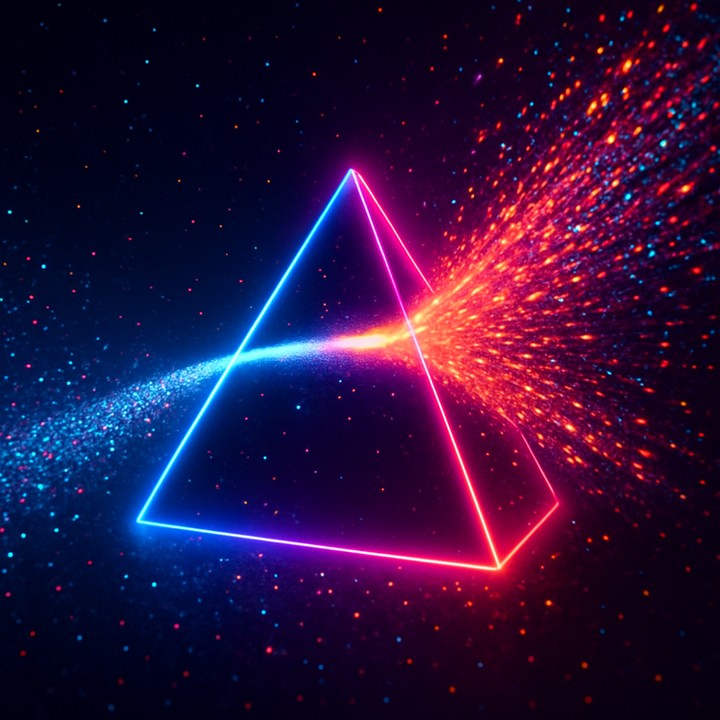Temple Grandin and the Geometry of Seeing Differently

Temple Grandin is often introduced as the autistic engineer who “thinks in pictures.”
The shorthand is convenient, but it misses the deeper contribution she made: she revealed a mode of perception built around structural coherence, not narrative or social inference.
At the outset, one clarification is essential:
This essay is not a comparison of accomplishments. It is an examination of a shared perceptual architecture that appears across different autistic profiles and across very different domains.
Grandin’s contributions stand entirely on their own.
What follows concerns cognitive structure, not status.
Her work illuminated a perceptual mode most people never encounter: a sensitivity to system-shape, pattern-disruption, and structural alignment that operates beneath narrative content. Grandin demonstrated that autistic perception often prioritizes coherence detection—the stability of a system’s geometry—over smoothing, story, or consensus.
For Grandin, that stability appears visually. Patterns assemble into spatial arrangements; disruptions show up as literal obstructions—a shadow, a reflection, an abrupt contrast line.
A Different Kind of Perception
This underlying architecture shows up across autistic experience, though the sensory expression varies. Some minds organize the world through spatial visualization. Others through logical scaffolding. Some through relational timing. And others through an intuitive sense of dynamic flow—how information, emotion, or meaning propagates through a system.
In this perceptual mode, relationships, ideas, conflicts, narratives, and organizational failures often reveal themselves as isomorphic shapes: different in surface features, identical in deeper structure.
This can sound metaphorical to those who do not experience it firsthand.
For those who do, it functions as a consistent and often predictive perceptual event.
When coherence resolves, there is a distinct internal snap—not emotional satisfaction, not mysticism, but something closer to a sensory event. It resembles the moment a Tetris piece clicks perfectly into place. Internal friction stops. The structure holds.
In frameworks like AToM, this pattern is referred to as precision coherence sensing: reduced smoothing, heightened sensitivity to contradiction, and high-resolution detection of structural equivalence across domains.
Neurotypical cognition excels at smoothing minor inconsistencies to maintain interpersonal coherence. Autistic coherence-sensing often does the opposite: it notices when the geometry buckles, even slightly.
A Concrete Bridge Between Worlds
Grandin could watch cattle hesitate in a chute and immediately identify the geometric trigger—a shadow across the floor, a dangling chain, a reflective surface. The insight was structural before it was interpretive.
A parallel orientation appears in abstract settings.
A coherence-oriented mind might:
- read a therapy transcript and sense the narrative bottleneck several exchanges before the overt rupture
- detect the timing shift in a couple’s interaction that signals relational drift
- identify, within an organization, the moment incentives and communication rhythms fall out of alignment
The same geometry appears, even though the content changes.
This perceptual architecture can shape life trajectories that defy standard forecasting models. Some individuals with this profile show long-term, repeated, incongruous success in complex environments—such as two decades of business outcomes far exceeding statistical expectations for a college dropout.
A separate essay examines this phenomenon in depth (link forthcoming).
The short explanation is that coherence detection often identifies structural failure points or opportunity vectors long before they become visible in conventional analysis.
Why This Perception Is Hard to Communicate
Grandin translated her internal geometry into drawings and engineering diagrams.
Others with similar architecture often must rely on language—a tool that struggles to capture structural perception.
This difficulty arises from several factors:
- Different cognitive priorities.Neurotypical cognition favors social smoothness; coherence-oriented perception favors structural stability.
- Different evidentiary norms.Structural intuition in abstract domains lacks a culturally settled vocabulary.
- Different thresholds for contradiction.What feels negligible to most observers can feel like a structural break to someone whose nervous system monitors coherence directly.
The perceptual event is geometric.
The explanation must be narrative.
Bridging this gap is nontrivial.
The Shared Geometry
The connection to Temple Grandin involves no claim of equivalent impact.
It concerns a shared orientation toward structure.
In both cases, the nervous system is tuned to:
- detect pattern discontinuities
- sense when systems lose or regain internal alignment
- perceive flow disruption before it becomes visible
- register global structure rather than local detail
- experience the “Tetris snap” of coherence resolving
This architecture is not uniformly distributed across the population, but it appears consistently across autistic profiles—even when each mind’s domain differs significantly.
One individual may perceive coherence in livestock movement.
Another in interpersonal attachment.
Another in trauma geometry, narrative arcs, organizational alignment, cultural stability, or meaning itself.
Grandin’s contribution was singular.
What matters here is recognizing that the architecture she revealed appears in others as well—often quietly, often without the public scaffolding or visibility that helped bring her insights forward.
Predictive Validity and Repeated Outcomes
This architecture is not merely introspective; it is frequently predictive.
In organizational environments, coherence-sensing often detects misalignment—communication bottlenecks, incentive conflicts, emergent failure states—months before they become visible through standard indicators.
Such perceptual precision can translate into repeated successes that appear statistically anomalous from the outside.
These successes do not imply genius, mystique, or exceptionality.
They reflect the behavioral trace of a structural-perception engine tuned to detect alignment before the world announces it.
A fuller exploration of this pattern will be provided in the linked essay.
Why This Matters
Grandin showed that autistic perceptual architecture can illuminate systems others cannot easily see.
She demonstrated that sensitivity to structure is not a liability but a form of clarity—especially vital in systems where fragmentation is rising.
Today, coherence failures are emerging across multiple human scales: interpersonal, organizational, institutional, cultural. Detecting the shape of a problem before it becomes visible is no longer an eccentric trait; it is a stabilizing one.
The perceptual architecture Grandin embodied has applications far beyond livestock handling.
It appears in trauma repair, narrative diagnostics, cultural analysis, executive decision-making, organizational design, and any domain where flow, alignment, and shape matter more than surface content.
Closing Reflection
Temple Grandin’s real legacy extends beyond her engineering contributions.
She revealed that structural perception is a legitimate cognitive mode—with its own strengths, vulnerabilities, and uses.
Some minds do not encounter the world through narrative first.
Systems present themselves as dynamic flows, isomorphic structures, attractors, and bottlenecks.
And when those systems align, there is that unmistakable internal click—the Tetris-piece sensation of coherence.
These minds contribute stability in environments prone to fragmentation.
They detect patterns before they fail.
They translate geometry into language others can use.
Grandin’s work was unique.
But the geometry she revealed did not end with her.
It appears in other lives, working in other domains, often quietly, often without a name.
Not because anyone is “the next Grandin.”
But because the perceptual architecture she illuminated is real, recurring, and increasingly necessary in a world losing coherence.


